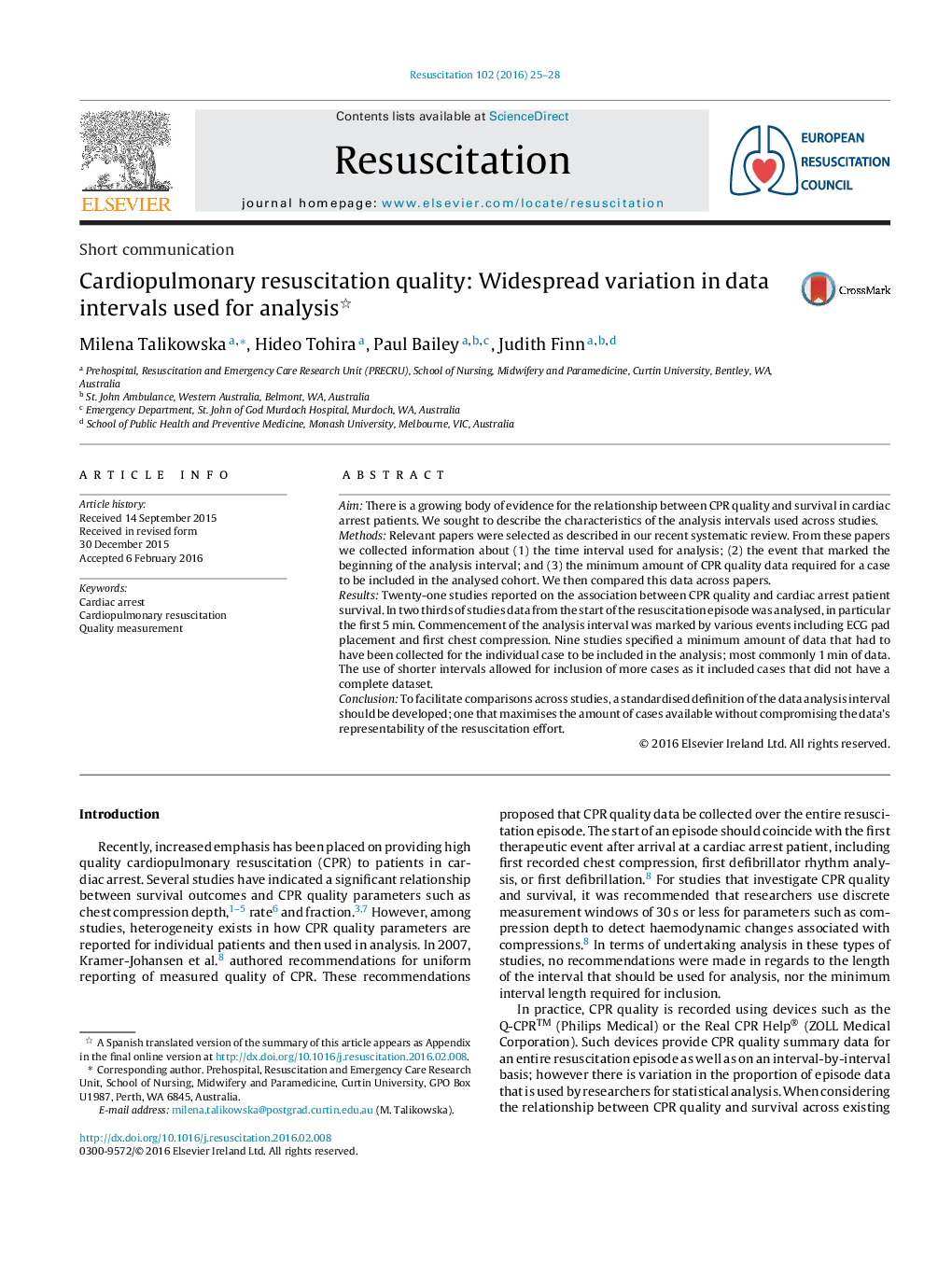| Article ID | Journal | Published Year | Pages | File Type |
|---|---|---|---|---|
| 3007786 | Resuscitation | 2016 | 4 Pages |
AimThere is a growing body of evidence for the relationship between CPR quality and survival in cardiac arrest patients. We sought to describe the characteristics of the analysis intervals used across studies.MethodsRelevant papers were selected as described in our recent systematic review. From these papers we collected information about (1) the time interval used for analysis; (2) the event that marked the beginning of the analysis interval; and (3) the minimum amount of CPR quality data required for a case to be included in the analysed cohort. We then compared this data across papers.ResultsTwenty-one studies reported on the association between CPR quality and cardiac arrest patient survival. In two thirds of studies data from the start of the resuscitation episode was analysed, in particular the first 5 min. Commencement of the analysis interval was marked by various events including ECG pad placement and first chest compression. Nine studies specified a minimum amount of data that had to have been collected for the individual case to be included in the analysis; most commonly 1 min of data. The use of shorter intervals allowed for inclusion of more cases as it included cases that did not have a complete dataset.ConclusionTo facilitate comparisons across studies, a standardised definition of the data analysis interval should be developed; one that maximises the amount of cases available without compromising the data's representability of the resuscitation effort.
